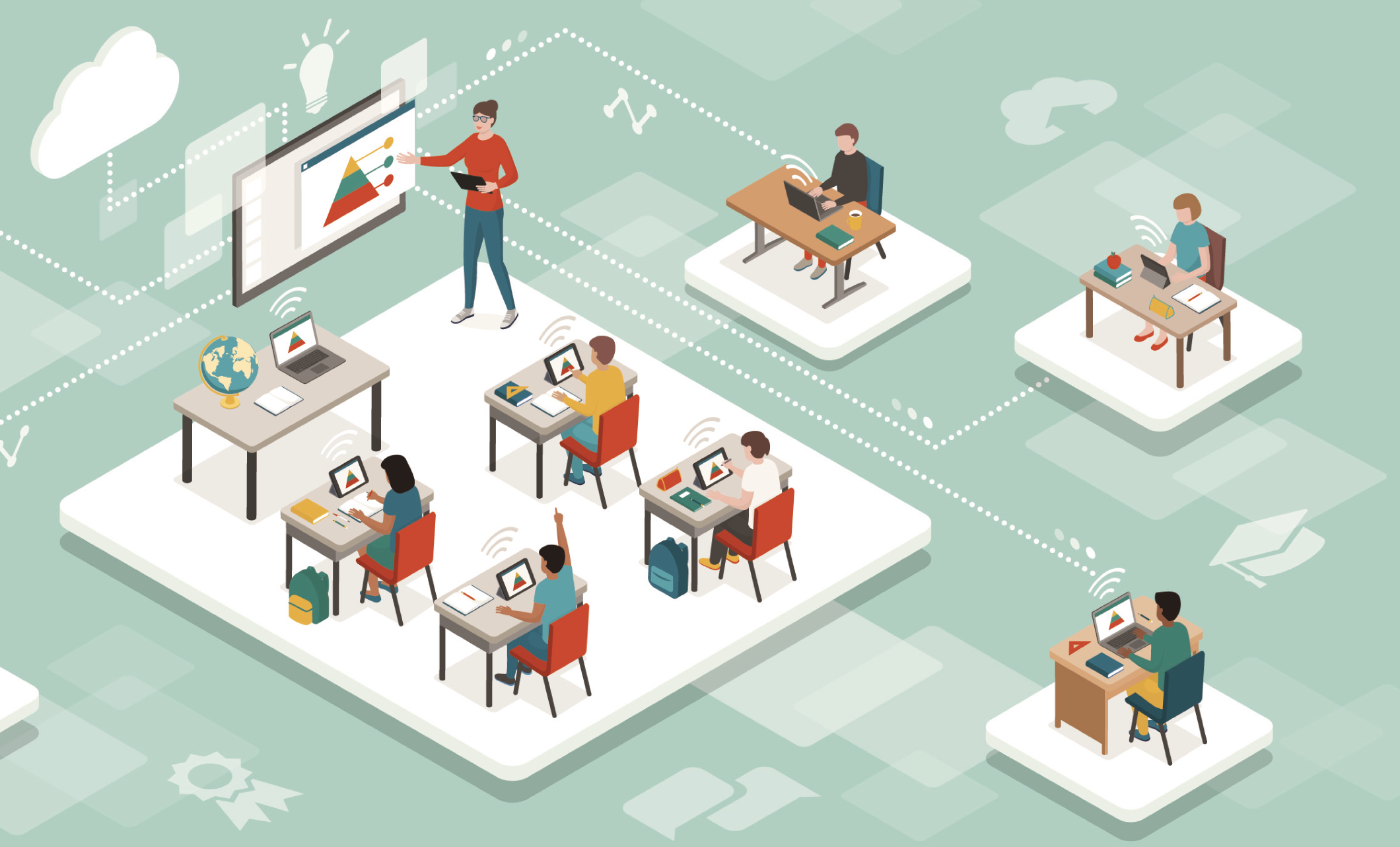The disruption caused by Covid-19 spurred organizations around the world to seize the opportunity to innovate in their learning and development. They were forced to ask: “Should we convert our learning programmes to virtual? Should we delay delivery until it is safe to go back to the classroom, or can we move forward and make virtual learning programmes work as effectively as face-to-face ones?”
After canvassing dozens of organizations, educational providers and programme participants about their experiences in this sudden flourishing of experimentation and innovation, there are a number of critical considerations for making virtual learning programmes work.
Get into the learning zone
A significant advantage of face-to-face learning is location. Whether it is a different city, a hotel, or simply training rooms in the organization’s offices, the setting creates and defines a learning zone. When attending a programme, learners feel compelled to be present and engaged. By contrast, when you log on for a virtual learning session at home with your ‘bunny slippers’ on, you are in a comfort zone. One learning leader at a large pharmaceutical company told me that many participants in one of their programmes had treated the experience like a virtual meeting: turning off their camera and muting their microphone, multi-tasking, signing off early, or dropping in and out as they saw fit.
We need to be clear on the expectations for a virtual learning session and explain what it takes to get into that learning zone: turning off, and tuning in. Learners should be encouraged to contract with others, in their teams and their homes, asking them to recognize that participation in a virtual programme is different and demands full attention. Limiting distractions is crucial for getting the most out of the experience by connecting with other participants and making a contribution.
Re-contract with educators and learners
There is an implicit contract in face-to-face programmes. The educator will be ‘edutaining’, doing the heavy lifting needed for an engaging learning experience built around activities that create and sustain energy; the participant is called upon to be active, ask questions and add to discussions and activities.
In a virtual world, this contract needs to be explicitly different, as the educator does not have the same ability to read the room or feel the energy. Michael Chavez, Duke CE’s chief executive, refers to this as kryptonite: the educator loses their ‘superpowers’, so the learner must share the heavy lifting. They can’t wait to be asked: they need to make connections with other participants without being prompted, jump into discussions, and provide real-time feedback about how sessions are working (or not). Those expectations need to be established and contracted up front.
Banquet vs bite-sized
The cost of face-to-face programmes mean educators tend to pack the agenda, trying to cram in as many experts, topics, experiences and methods as possible. “If we have made this investment and we have participants captive”, they reason, “why not pack in as much as we can?” But this banquet mentality results in over-stimulation and over-filled brains.
In a virtual learning experience, we have eliminated travel and logistical costs so we don’t have to hold participants captive for long periods. We can come together on multiple occasions over a period of time, so programmes can take a bite-sized approach to content and experiences, with an embedded learning cycle. This approach has been adopted by one global engineering company for its executive development. What used to be a five-day intensive face-to-face programme, followed by a three-month action-learning project and coaching, now runs over nine months. There are multiple sessions with the company’s leaders and a focus on local team-based application between sessions. The bite-sized approach helps learners to focus on just one or two critical ideas at once, giving them the time and space to make the learning ‘stick’ in the flow of their real work.
Leverage the ‘grey space’
A bite-sized approach demands much more effort from learning leaders to design what happens once learners log off from their virtual sessions, before the next one. I call this in-between time ‘grey space’. It is where meaning-making and application takes place. Activities and experiences should be designed into programmes in this space to help embed learning. Options include learning peer connections and coaching, to help participants with sense-making and application; co-opting the participant’s work tribe to examine how their learning applies to the work of the team; and experimentation and feedback activities, so that participants learn by doing, collect feedback and report back.
Virtual learning after Covid
Many of the learning practitioners I spoke with were looking forward to a post-Covid return to the classroom. The pivot to virtual learning in 2020 was regarded as having served as a stop-gap solution, but not as something that could replace face-to-face programmes in the longer term.
I am not sure that is true. Post-Covid, our experience with virtual teams and virtual learning could feed into a blended learning design where we take advantage of the best of both. Face-to-face sessions could be shorter and focus on creating a learning community, a support network and a safe place to explore ideas. Virtual learning could be blended in to provide content, tools and frameworks, as well as support for learners in applying and embedding learning over time – and creating accountability. Our forced virtual experience has shown how we can innovate to create better learning experiences and outcomes. We should remember what we have learned.

